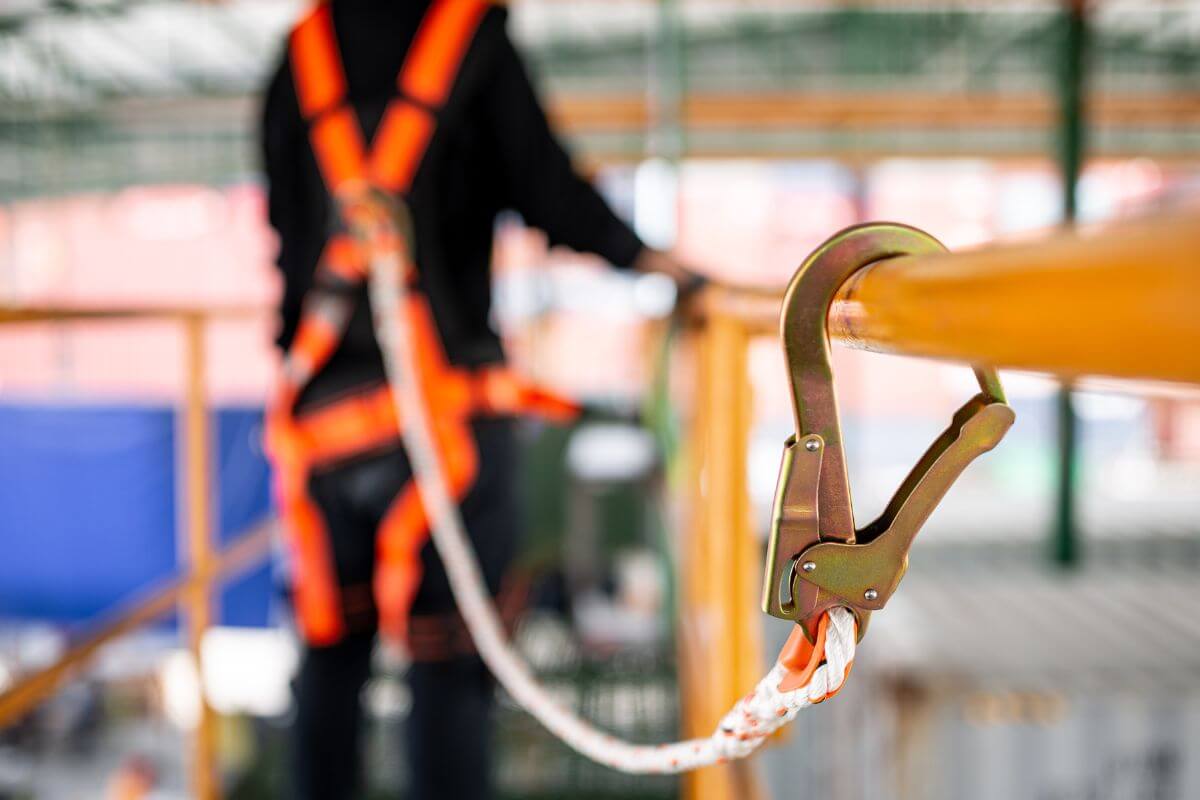In 2023, the construction industry experienced the most workplace deaths out of any industry and saw 2.3 injuries for every 100 full-time workers. Construction companies must commit to improving workplace safety to prevent accidents, injuries, and fatalities. There are several ways to make 2025 a safer year for your crew, including making SMART safety goals, exploring tech-based safety tools, opening up conversations for mental health, and communicating about safety as a team.
Quick look
- Construction sites can be dangerous places, with the risks of accidents, injuries, and even death.
- In 2023, the construction industry experienced the most workplace deaths out of any sector and 2.3 workplace injuries for every 100 full-time workers.
- A strong commitment to worksite safety can decrease injuries and improve employee retention.
- Companies can become safer in 2025 by committing to SMART goals, integrating safety technologies, addressing mental health issues, and increasing communication.
A look back at safety in construction
Staying safe is crucial in construction and the skilled trades, especially given the unique dangers of construction work. Unlike working in a climate-controlled office environment, construction workers are exposed to unpredictable weather and conditions on job sites. They work in freezing conditions and blazing heat, at heights, in trenches and in excavation sites. Add in the fact this is all while being exposed to hazardous materials, operating heavy machinery, using dangerous power tools, and in areas with an increased risk of slips and falls, it’s no wonder construction remains a dangerous industry.
All of these risk factors increase the likelihood of accidents and injuries. In 2023, construction experienced 1075 fatal injuries—the most workplace deaths out of any industry—and 2.3 workplace injuries for every 100 full-time workers.
In 2022, construction had the third-highest rate of recordable illness and injury, with 4.5 million medically consulted injuries among construction workers. Additionally, 25% of construction workers admit they failed to report workplace injuries.
These statistics are sobering reminders of how dangerous construction work can be and how crucial it is to wear appropriate PPE, follow safety protocols, and create procedures focused on improving the safety culture of the job site.
The value of creating a strong safety culture
A strong emphasis on workplace safety can benefit workers by reducing the number of workplace injuries, accidents, and even deaths. One study examined the effect of safety training on preventing falls from heights in Ontario, Canada. Two years after the training, workers continued using the same safety procedures, and companies experienced a 19 percent decline in injuries from these types of falls (320 fewer injuries in total).
A strong safety culture also benefits employers. Companies with higher employee engagement and safety experience 24% to 59% lower turnover rates, boosting employee retention and lowering hiring costs. A strong safety culture can also save companies from hefty non-compliance fines and costly delays by empowering workers to speak up and report safety violations without fear of retaliation.
4 ways to be safer on the work site in 2025

The new year is a great time to set goals for a new you and to revisit your company’s commitment to workplace safety.
1. Commit to SMART safety goals
Creating safety goals is crucial to protecting workers, ensuring compliance with regulations, and promoting a culture of accountability. In the risk-heavy construction site environment, clear safety goals provide a roadmap for identifying and mitigating risks while reducing the likelihood of accidents and injuries.
For the best chance of meeting your targets, use SMART goals:
- Specific
- Measurable
- Achievable
- Realistic
- Timebound
Instead of declaring that you’d like to “make the work site safer,” a SMART goal would be to “Decrease workplace accidents by 25% by July 2025.” This process allows you to track your progress after implementing new safety measures.
2. Integrate safety technologies
Several tech advancements, including artificial intelligence (AI), have helped reduce workplace injuries and accidents. Companies have leveraged AI’s power to make construction sites safer by using AI platforms to assess risks, autonomously operate heavy equipment, handle dangerous construction tasks, and ensure workers wear the appropriate PPE.
AI is especially useful in safety applications because of its impartiality. Using an AI platform to identify regulatory issues, highlight missing PPE, or report non-compliance takes the onus off workers to do the same.
Several apps also offer tech-based strategies for keeping construction sites safe. Apps like FieldLens, SafeSite, and the Safety Meeting App can help construction companies identify safety issues, hold safety meetings, simplify documentation, and organize checklists, incident reports, and inspections in one place.
3. Get big on communication
Safety works best when it’s not one-and-done. Conducting safety meetings and setting safety goals (even SMART ones) is good, but it can easily be forgotten if you don’t maintain consistent communication about the topic.
Conduct regular safety checks, speak to your crew and coworkers about regulations, and remind others about wearing appropriate PPE or taking safety precautions when required. Remind your crew that they can report safety violations or raise safety concerns without fear of punishment or retaliation. Leading by example is one of the best ways to open the lines of communication.
4. Prioritize worker mental health
Physical safety is only half the battle—the construction industry also experiences risks to mental health. Over 80% of construction workers say they’ve experienced a mental health issue, and the construction industry has the highest suicide rate of all industries.
Keeping workers safe in 2025 needs to go beyond PPE and instructional videos; it requires keeping an eye out for warning signs of depression, including:
- Losing interest in things you used to enjoy
- Feeling angry, irritable, or frustrated
- Sleeping too little or too much
- Feeling lost, empty, worthless, or hopeless
- Changes in appetite; weight loss or gain
Encourage your crew and coworkers to avoid the tendency to “man up” and encourage them to speak up and ask for help instead.
Bottom line
Worksite safety requires an ongoing commitment to fostering a culture of safety in which every worker feels valued, protected, and empowered. The construction industry can significantly reduce injuries and fatalities by adopting SMART goals, leveraging safety technologies, improving communication, and addressing mental health challenges. As 2025 is well underway, take this opportunity to renew your dedication to safety and ensure that every team member goes home safe and healthy at the end of the day.
For more info about how to stay safe and healthy under the hard hat, subscribe to our newsletter and follow us on social media!



